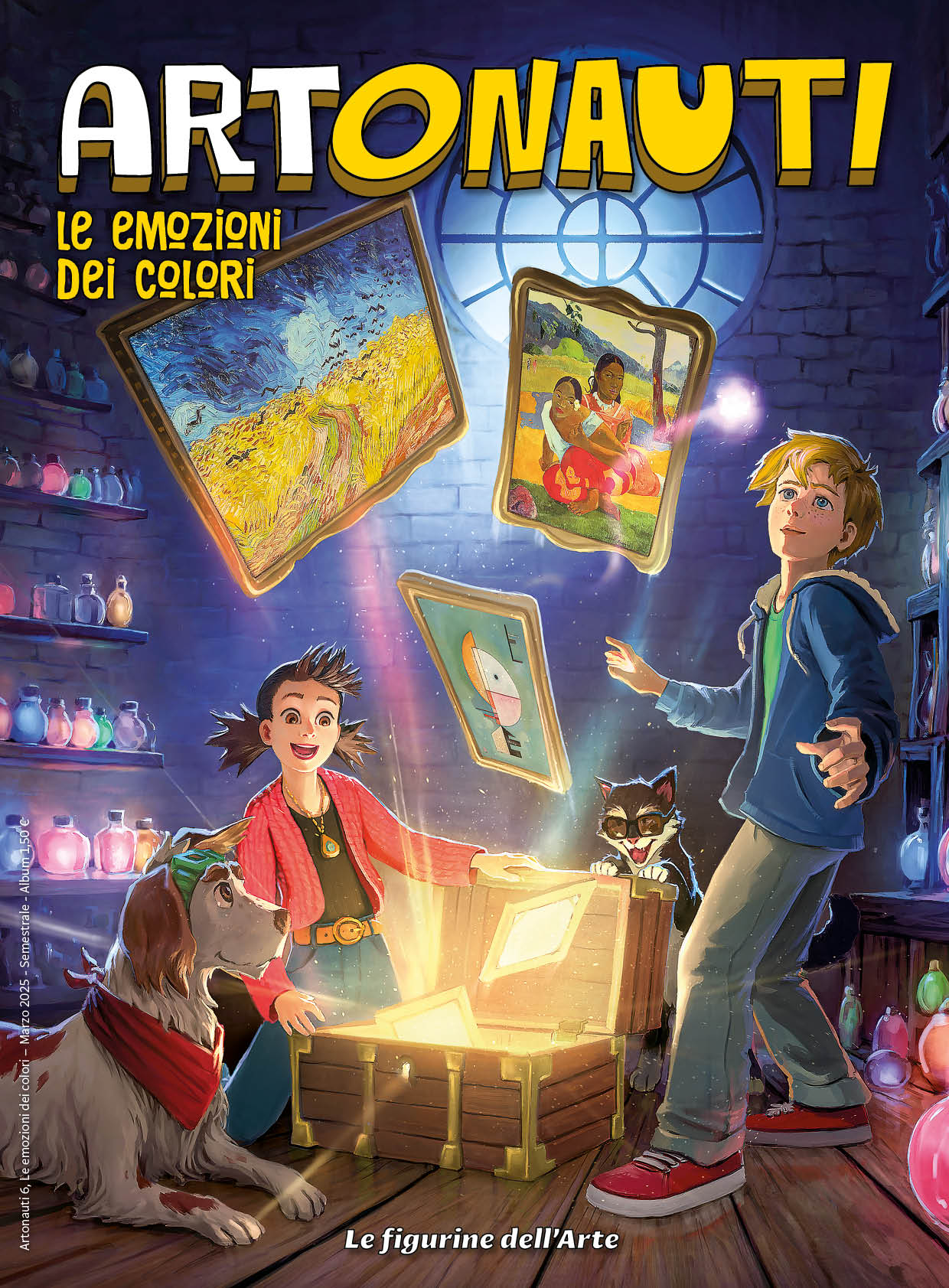A journey through colors, emotions and art masterpieces, but also a reflection on the relationship between man and technology. This is the plot of the sixth album in the Artonauti collection, the publishing project that has managed to combine the timeless appeal of figurines with artistic learning. At a time in history when artificial intelligence is redefining roles, skills and perceptions, Artonauts offers an experience that invites us to slow down, observe and feel, away from the smartphone screen. The new album revolves around a central and topical confrontation: the opposition between the human capacity to feel emotions and the operational coldness of artificial intelligences. At the center of the narrative are once again two young protagonists and their dog, now familiar figures to readers from previous editions. This time, their guide is an artificial intelligence named Eureka, capable of performing complex tasks, writing texts and translating languages. However, Eureka soon reveals an insurmountable limitation: although it knows the definition of concepts such as happiness, anger, and nostalgia, it is unable to feel them.
The narrative path unfolds as a journey through time and art history. The characters meet some of the most celebrated artists of every era, each carrying a different sensibility and a peculiar way of interpreting the emotional world. From Paul Klee to Vincent van Gogh, from Edvard Munch to Caravaggio to Kandinsky, children are taken on a discovery of the artists’ works and lives, investigating how each represented passions, moods and inner tensions. In this way, art becomes a magnifying glass on emotions, but also a key to understanding human thought. The project maintains the playful-educational approach that has made it a success among families and in schools. The figurines do not just portray famous works: they become pieces of larger puzzles, completing frescoes, revealing details, stimulating visual recognition and active memorization. The classic phrase “I have it, I miss it” takes on new meanings when it comes to Caravaggio, Renoir, Van Gogh or Keith Haring. Collecting is thus transformed into a shared exercise in intergenerational dialogue: parents and children, teachers and pupils, grandparents and grandchildren discuss the value of art, learn together, and rediscover the pleasure of conversation.
At the end of the journey, the album itself takes on the value of an object to be preserved: a kind of miniature art book to be leafed through over time. The TwinCards, included in the packages, allow the experience to be further expanded, building a personal art gallery and enriching the game with collectible elements that stimulate creativity and curiosity.
The format remains affordable: the album in the basic version is distributed at newsstands for 1.50 euros. Each pack of stickers, containing five images and a TwinCard, is priced at 0.80 euros. For those who want a more solid and durable version, the premium hardcover album is also available, which can be purchased online at the official website of the Artonauts, in bookstores or by order at newsstands for 9.90 euros. Distribution also follows an inclusive logic: in addition to traditional newsstands, the cards can be found on Amazon and the official website, thus expanding the audience of potential users.

 |
| Artonauts' new album explores emotions and art in the age of artificial intelligence |
Warning: the translation into English of the original Italian article was created using automatic tools. We undertake to review all articles, but we do not guarantee the total absence of inaccuracies in the translation due to the program. You can find the original by clicking on the ITA button. If you find any mistake,please contact us.